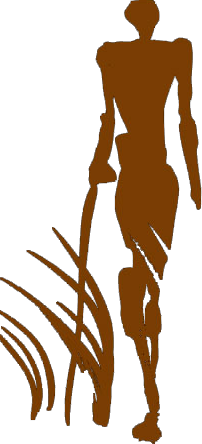Tracking lions starts from the moment you set foot in the wilderness. The trail that they leave behind is like a long piece of string. At the one end is us, on their trail, and at the other, their present and living world that we are ever trying to catch up with, witness and learn from. We track their calls at night and learn, not just about their movements, but the reasons for them. Signs and sightings teach us about behaviours, preferences, decision making. The better we can know intimacies, not just of a species, but the lion culture and behaviours unique to this area, to this pride or even individuals within the pride, the more successful we are likely to be when predicting their whereabouts based on limited evidence. Yesterday’s news may be a step behind, but it is still relevant to the broader picture that one slowly becomes intimate with, over a length of time in a particular place.
It was one of those moments that hit home for me, the privilege of where I am, alone in North Luangwa with a national park scout: with each slow and deliberate step, our footfall matched the rhythmical territorial lion roars a hundred metres off. Growling and snarling sounds are typical as lions muscle their way, tooth and claw, to get their pound of flesh. But transitioning immediately into a roar suggested not only scrapping over a recent kill but also an instability in a pride that I have come to know since 2013. In the last few months there appears to have been a split in the pride and the reason for it was about to become evident.
As we made our way downwind out of sight through the thicket a fight broke out with ferocious sounds tending in our direction. Three big males burst their way into the thicket chasing each other, with flaring emotions, along an animal path orientated 30 metres past us. They were completely unaware of us. These were big, black maned individuals that we had not seen before.
As the dust settled, we continued our path downwind to get a view of the mass of noisy lions gathered around the fresh carcass of a young buffalo. From sixty metres off a lioness spotted us. Two other heads raised but soon competition for the meat made us much less interesting and their heads were down again. We came out into the open to not appear to be suspiciously skulking and allowed them to get used to our presence as non-threatening.
Moments later one of the black maned males was growling and chasing a lioness through the long grasses just behind us.
I moved further out into the open, displaying my focus on a lilac breast roller sitting a dead stump. Just like us, creatures watch your attention. Someone focussed on you and moving forward displays potential intent. A predator facing elsewhere and moving passed is less threatening than one looking directly at you and approaching. All animals out here survive by being experts at reading each other’s behaviour.
But my step out into the open was one step too far and a three-month-old cub broke from the kill and ran for cover. Cubs are still building a more detailed understanding of what is threat and what is prey, what to run from and what to run towards.. They learn from the response of adults. After a minute or two the cub came pacing back across the plain satisfied that I was not as threatening as I may have seemed.
The cub had given us the next key to the puzzle. Males taking over a pride will kill cubs seared by the previous males. Females will not mate while they have dependents. The cubs remain under her care and tuition for up to two years. A male may not hold tenure over a pride for that long and he doesn’t want to spend his time and energy defending a foreign male’s offspring from ferocious attacks from hopeful coalitions.
So, it was obvious that these cubs were the new males’ offspring and the takeover must’ve occurred three to six months prior to their birth (there is a period of stress after a take-over, cubs may have been killed and the adolescents chased. Females may settle and mate within the next three months followed by approximately 106 days of gestation).
Across the river, roars responded to those from the plain. We later saw four lions approach to the edge of the shallow river but would go no further. What was a pride of ten females was now eight, plus two cubs and three big new males. The two outgoing males and four maturing males had clearly been chased or killed. The pride of six downstream might be those young males and two females that had accompanied them. Part family, part enemy they sat across the river but would come no closer. The beginnings of an independent pride.
On the plane the new males were too preoccupied to get up and chase the threat across the river. Family dynamics were not yet settled as another fight broke out between the three males and a female with another female rushing in to defend her.
Witnessing this moment in their lives, gaining the trust of lions on foot, through deliberate and careful movements, in the wildest and most remote of wildernesses, is a privilege, which like the rest of nature, is beyond words. What may seem to be a happy pride and settled congruent family once went through this violent upheaval too, as maturing coalitions of males lions maraud the lands in hope of one day belonging to a family of females and cubs of their own.

